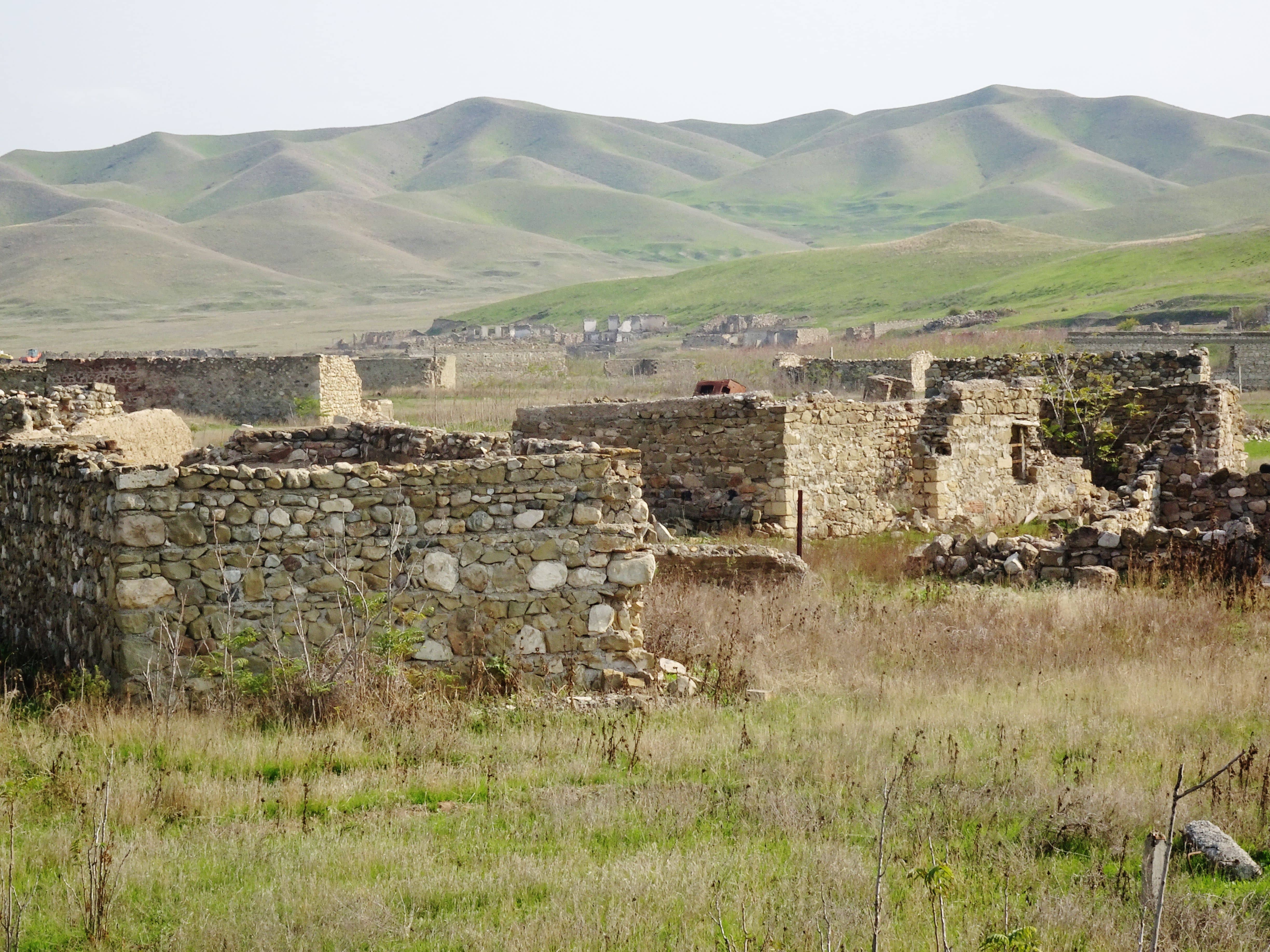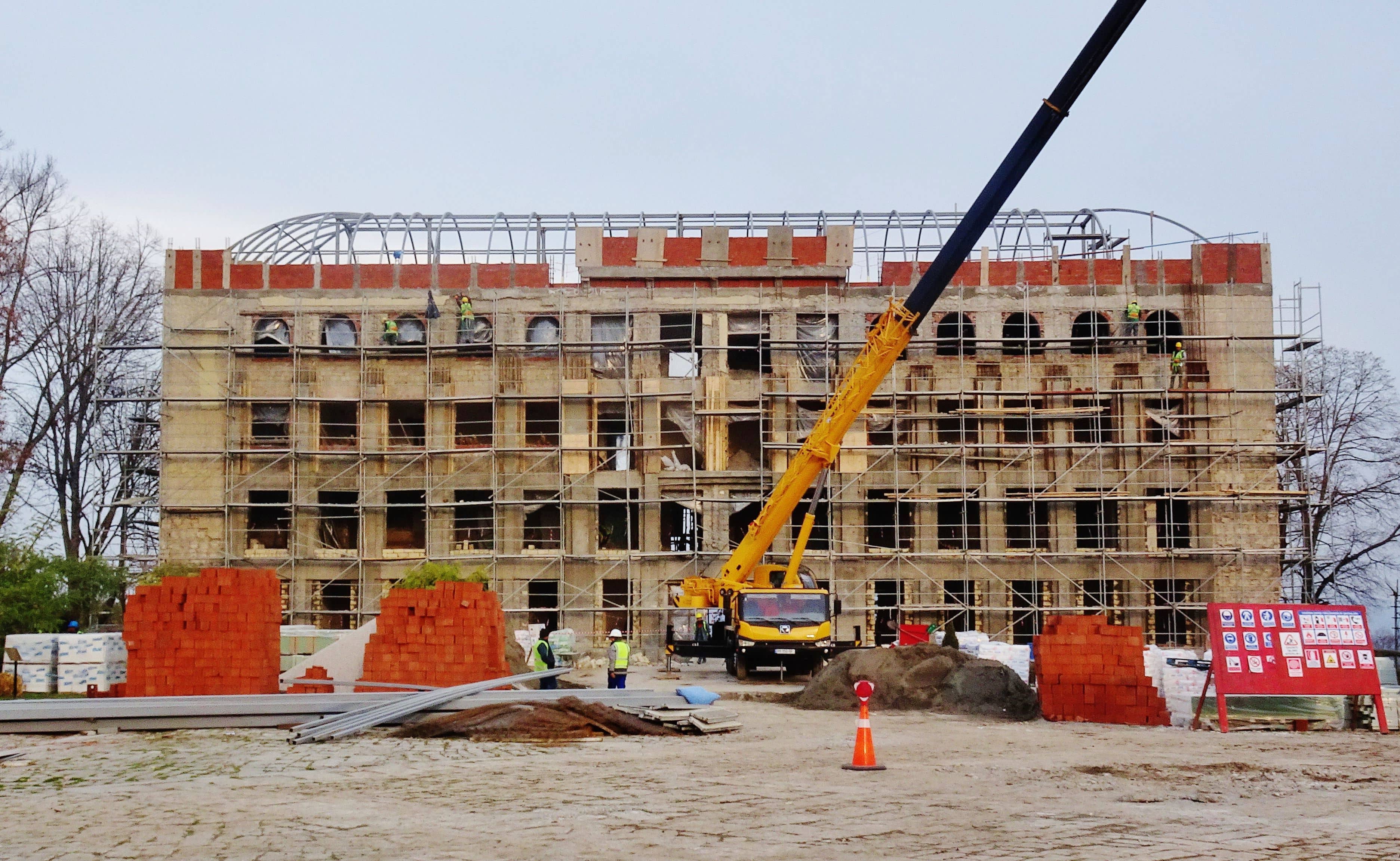One Year Later: A Visit To Azerbaijan’s Formerly Occupied Territories And Nagorno-Karabakh
Recent Articles
Author: Ambassador (Ret.) Richard E. Hoagland
11/30/2021
On October 30, a Caspian Policy Center delegation spent an 18-hour, 1,000 km day traveling along Azerbaijan’s southern border with Iran to see in detail the areas, including the mountain city of Shusha, that Baku regained control of one year ago in the Azerbaijan-Armenia War for Nagorno-Karabakh. Azerbaijan is rebuilding some of the main roads that had been neglected for years, fields are being cleared for planting, key structures in ruined cities are being restored, and some new settlements are under construction.

Ghazanchetsots Cathedral being repaired.
In the high mountain city of Shusha, we confirmed that Baku is indeed restoring the Armenian Apostolic cathedral that sustained damage in the recent war as well as the important 1875 mosque and madrassa that Armenian occupiers had used as a barn to shelter farm animals. But the city itself is nearly a ghost town, now that the Armenians who lived there have fled, taking with them what they could and destroying the rest. In the surrounding regions, the vast majority of the farms, settlements, and villages remain as Armenia left them – totally destroyed with only remnants of stone walls remaining to even suggest that normal life once thrived there.
 Destroyed village between Fizuli and Shusha.
Destroyed village between Fizuli and Shusha.
In reality, the return of the internally displaced population will take considerable time to accomplish. We heard more than once that simply building the structures for new settlements is a good first step but that returnees will need jobs for themselves and schools for their children, the absolute basics for a return to a normal, if initially austere, life. Medical clinics, shops, grocery stores, and petrol stations will also need to be built, supplied, and staffed. The current work being done just one year after the war is truly impressive. But what’s needed to return to normal after 30 years of destruction and intentional devastation is indeed daunting.

BACKGROUND
The physical territory of N-K itself is located wholly within the borders of Azerbaijan. By contemporary international law that views international borders as sacrosanct, unless both sides agree to a change, there should be no conflict over whose territory N-K is. But as quite often happens, the reality is much more complicated than a cut-and-dried recitation of international law.
In fact, N-K is in a category of international problems in the area of the former Soviet Union that are often called prolonged conflicts or, sometimes, frozen conflicts. These include Transnistria in Moldova, Abkhazia and South Ossetia in Georgia, and Donbas in Ukraine. To one degree or another, they all include ethnic populations that wish to break away from the country to which they were assigned when the victorious Russian revolutionaries drew the maps defining the Soviet Socialist Republics nearly a century ago. To maintain control of the multitude of ethnic citizens, they sometimes intentionally employed the concept of “divide and conquer.” But in other cases, they simply couldn’t have foreseen the conflicts they were laying the groundwork for when they sat down and put ink to paper. In contemporary times, Russia under President Vladimir Putin has done essentially nothing to resolve these prolonged conflicts because they are one of the factors that keep the involved countries within Moscow’s orbit.
In the case of Nagorno-Karabakh, the conflict goes back at least into the 19th century. Many Armenians have almost always considered N-K as the birthplace and traditional home of the Armenian people and culture, and some have given N-K its pre-modern name, Artsakh. But it’s not just that simple, because Azerbaijanis consider the mountain-top city of Shusha in Nagorno-Karabakh as the sacred birthplace of Azerbaijani art and culture. Both countries claim a deeply emotional attachment to N-K.
After the first modern war over N-K between Armenia and Azerbaijan in the early 1990s soon after their independence, what became the Organization for Security and Cooperation in Europe, or the OSCE, established the Minsk Group co-chaired by three ambassadors from OSCE member states with significant Armenian diaspora populations – Russia, France, and the United States – and headed by the esteemed Polish diplomat, Andrzej Kasprzyk, whose formal title is Personal Representative of the OSCE Chairperson-in-Office. Could the Minsk Group play a role to bring lasting peace between Armenia and Azerbaijan? It’s complicated because neither Armenia nor Azerbaijan, so far, has a concrete response on the future role of the Minsk Group. And it’s further complicated because Russia’s ultimate goal, although Moscow is the current “peacekeeper” and continues to mediate, is actually unclear.
And so, once again this prolonged conflict is prolonged.